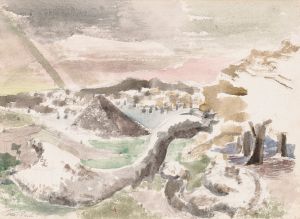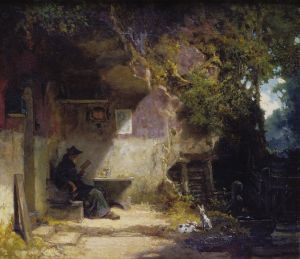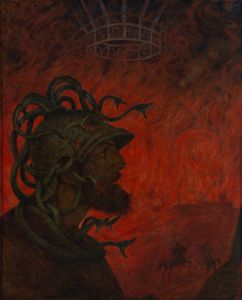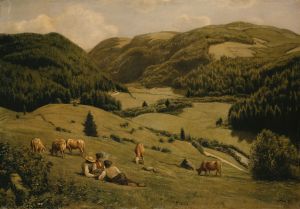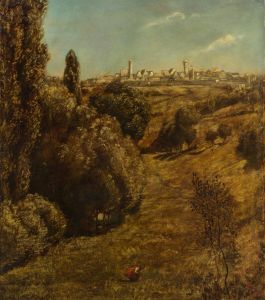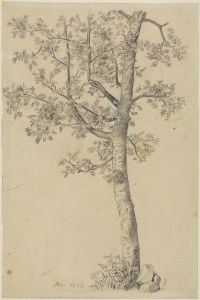
Die Erde
A hand-painted replica of Hans Thoma’s masterpiece Die Erde, meticulously crafted by professional artists to capture the true essence of the original. Each piece is created with museum-quality canvas and rare mineral pigments, carefully painted by experienced artists with delicate brushstrokes and rich, layered colors to perfectly recreate the texture of the original artwork. Unlike machine-printed reproductions, this hand-painted version brings the painting to life, infused with the artist’s emotions and skill in every stroke. Whether for personal collection or home decoration, it instantly elevates the artistic atmosphere of any space.
Hans Thoma (1839–1924) was a German painter associated with the late Romantic and early Symbolist movements. One of his notable works, Die Erde (translated as The Earth), reflects his characteristic style, which often combined naturalistic detail with allegorical and symbolic elements. Thoma's art frequently drew inspiration from his rural upbringing in the Black Forest region of Germany, and his works often depicted themes of nature, mythology, and human connection to the natural world.
Die Erde is an allegorical painting that portrays the Earth personified as a maternal figure. In the artwork, a central female figure, symbolizing the Earth, is depicted in a serene and nurturing pose. She is surrounded by elements of nature, such as plants, flowers, and possibly animals, which emphasize her role as the giver and sustainer of life. The composition reflects Thoma's deep appreciation for the harmony between humanity and the natural environment, a recurring theme in his oeuvre.
Thoma's style in Die Erde demonstrates his meticulous attention to detail and his ability to blend realism with symbolic meaning. The painting's color palette and composition evoke a sense of tranquility and reverence for nature, aligning with the Romantic ideals of the 19th century. At the same time, the allegorical representation of the Earth as a nurturing figure connects the work to the Symbolist movement, which sought to convey deeper spiritual and emotional truths through art.
Hans Thoma gained recognition during his lifetime, particularly in Germany, where his works were celebrated for their accessibility and emotional resonance. However, his reputation outside of Germany remained relatively modest compared to other artists of his era. Today, Die Erde is considered an important example of Thoma's ability to merge personal, cultural, and philosophical themes into his art.
The painting is housed in the Staatliche Kunsthalle Karlsruhe, a museum in Karlsruhe, Germany, which holds a significant collection of Thoma's works. The Kunsthalle has played a key role in preserving and showcasing Thoma's legacy, ensuring that his contributions to German art are recognized and appreciated by contemporary audiences.
While Die Erde is not as widely known as some other works from the Romantic or Symbolist periods, it remains a testament to Hans Thoma's unique artistic vision and his ability to convey profound ideas through his depictions of nature and allegory.






